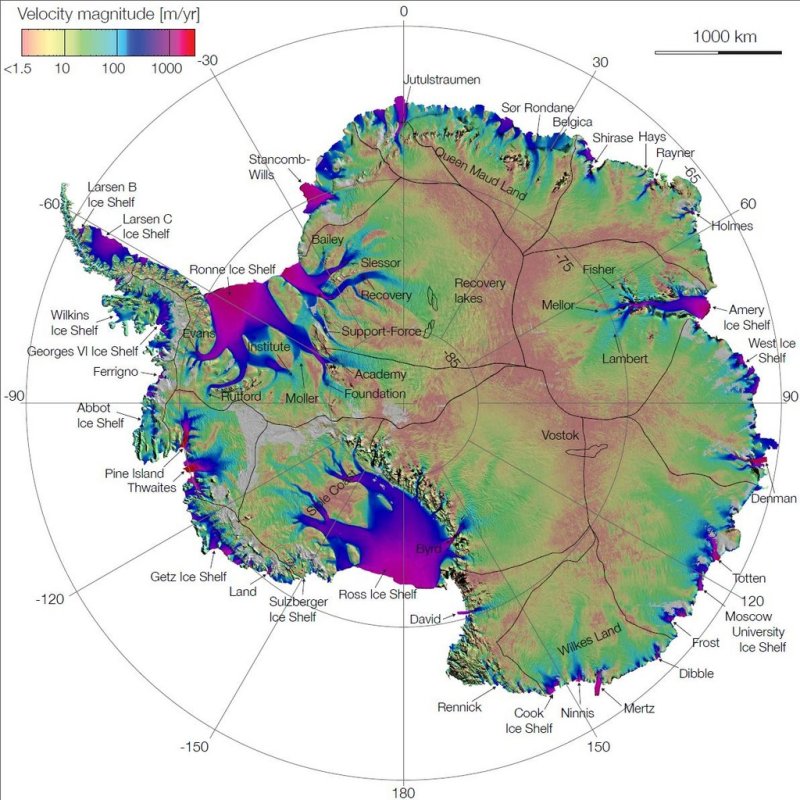First complete map of the speed and direction of ice flow in Antarctica, derived from radar interferometric data from the Japan Aerospace Exploration Agency's ALOS PALSAR, the European Space Agency's Envisat ASAR and ERS-1/2, and the Canadian Space Agency's RADARSAT-2 spacecraft. Credit: NASA
PASADENA, Calif., Aug. 18 (UPI) -- Researchers conducting a NASA-funded study say they have used radar data to create the first complete map of the speed and direction of ice flow in Antarctica.
Created using radar observations from a large number of international satellites, the map shows glaciers flowing thousands of miles from the continent's deep interior to its coast -- and will be critical for tracking future sea-level increases from climate change, a release from NASA's Jet Propulsion Laboratory in Pasadena, Calif., said Thursday.
"This is like seeing a map of all the oceans' currents for the first time. It's a game changer for glaciology," said Eric Rignot of JPL and the University of California, Irvine. "We are seeing amazing flows from the heart of the continent that had never been described before."
Rignot and Irvine colleagues Jeremie Mouginot and Bernd Scheuchl used massive amounts of data captured by European, Japanese and Canadian satellites to remove out cloud cover, solar glare and land features masking the glaciers.
Using NASA technology, the team patiently pieced together the shape and velocity of glacial formations.
The map revealed glacial formations moving as much as 800 feet per year across immense plains sloping toward the Antarctic Ocean.
"That's critical knowledge for predicting future sea level rise," NASA cryospheric scientist Thomas Wagner said. "It means that if we lose ice at the coasts from the warming ocean, we open the tap to massive amounts of ice in the interior."















